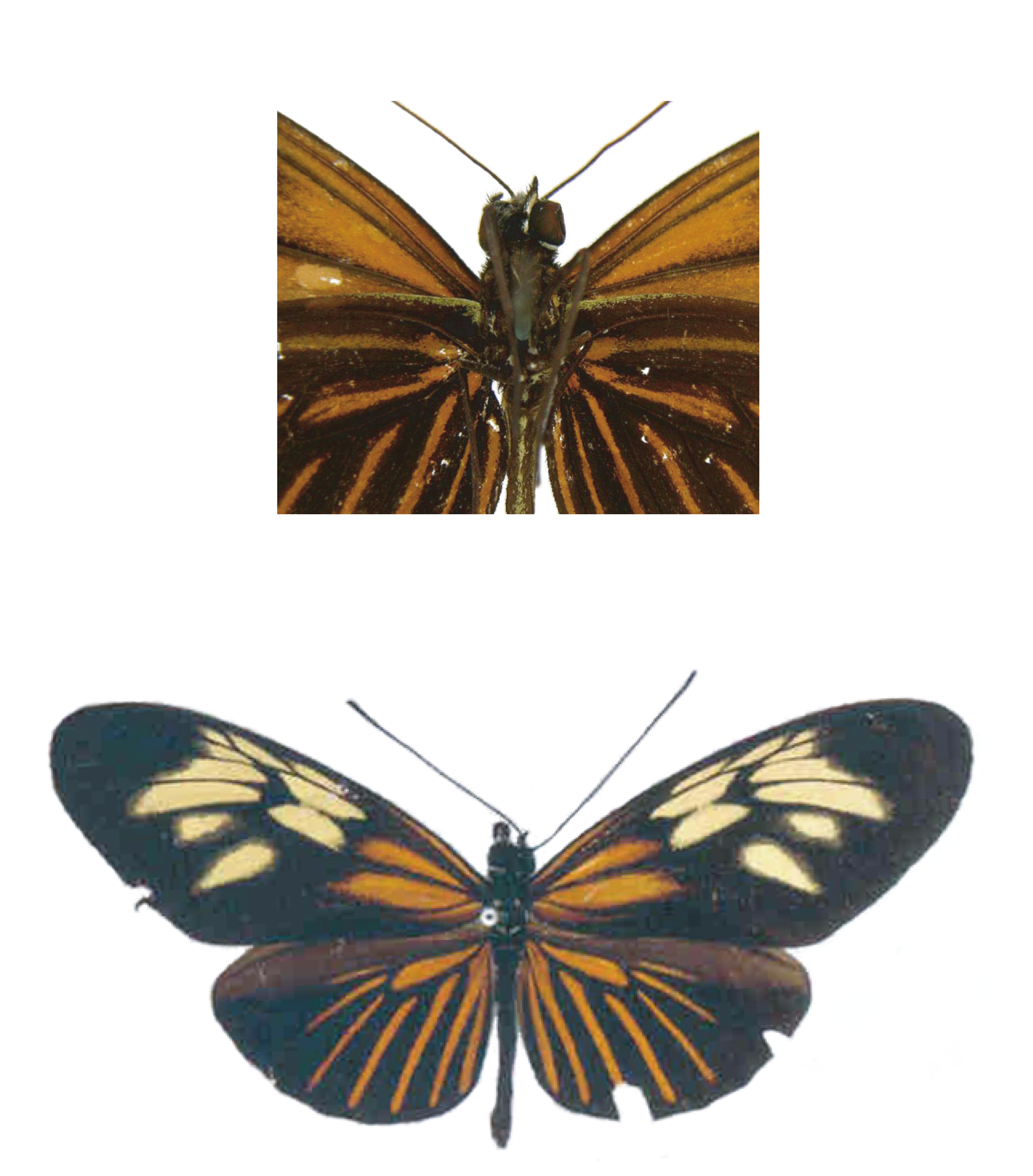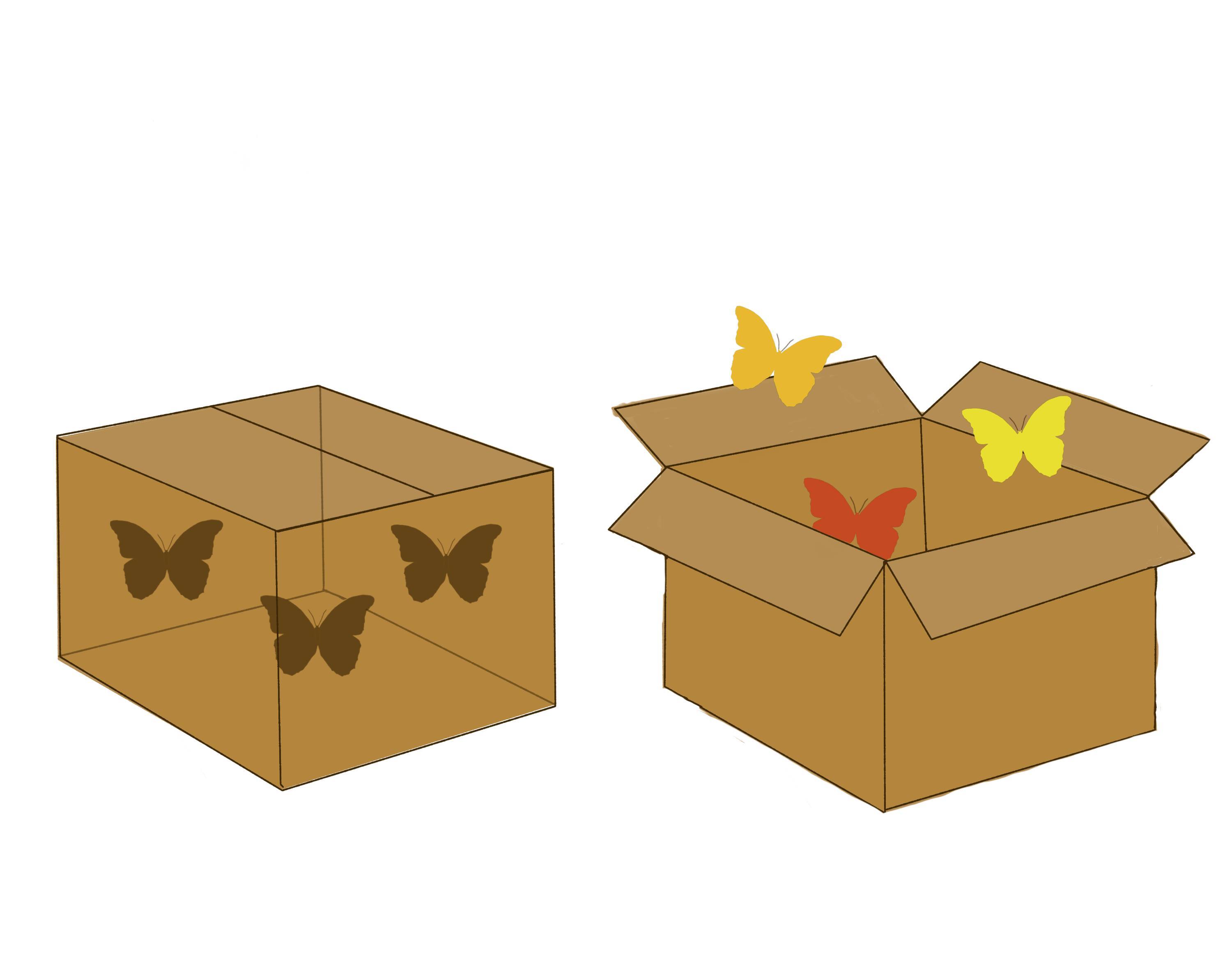Story by Mar Repullés & Pável Matos
Last April, Mar and Pável travelled to Campinas, in southeastern Brazil, as part of our ongoing collaboration with André Freitas and his team at the “Laboratorio de Borboletas” (LABBOR) at UNICAMP.
Why did we travel to Campinas?
Our research project, funded by the Czech Science Foundation and FAPESP, Brazil, aims to understand the evolutionary mechanisms that shaped the extant biodiversity patterns in Brazil’s Atlantic Forest. We study this from different angles, from macroevolution (i.e., the evolution of macro taxa, such as the major taxonomical groups like mammals, beetles, butterflies, etc) to population genomics and contemporary patterns of species diversity. Our focus is on butterflies, beautiful insects whose ecology, systematics and genomic resources have shed light on the origin and maintenance of neotropical biodiversity.
Figure 1: Butterflies found during the fieldwork in Serra do Japi, from topleft, clockwise: Charis cadytis (Riodinidae), Hypothyris ninonia (Ithomiini), Methona themisto (Ithomiini), Myscelia orsis (Nymphalidae). Photos by Mar Repullés.
With our partners at LABBOR, a Workshop titled “Advances in the Biology, Ecology, and Evolution of Neotropical Butterflies” was organised for students and researchers at UNICAMP. The speakers who joined were researchers based in some of Brazil’s top universities and biodiversity institutions, whose expertise ranges from butterfly monitoring, taxonomy, biotic interactions, population genetics, and conservation. It was a multidisciplinary event and, more importantly, everyone engaged in networking and brainstorming about directions to advance our understanding of neotropical butterfly biodiversity through collaborative research.
Figure 2: Together with André Freitas’ team, we organized a Workshop on Neotropical Butterflies at the University of Campinas. Photos by LABBOR.
Cuticular Hydrocarbons Study
Besides the workshop and social events where we interacted with local researchers, we could not miss the opportunity to travel around and discover the huge diversity that the Atlantic Forest hosts, despite the extremely high habitat fragmentation and degradation seen in the region.
One of the research questions we had in mind for this trip was about the role of organic compounds on the cuticles of butterflies in preferential mating. Imagine, now that summer is almost here in Europe, we see butterflies flying around and some of them trying to mate! In this context, many of us have asked at some point “How do butterflies recognise each other?” With some species having little visual signals, how can they tell apart different species? And sexes?
Communication in butterflies adopts different forms, from wing colours involved in aposematism warning predators of their unprofitability to chemical signalling involved in mating. For instance, organic compounds that cover their body and wings, such as cuticular hydrocarbons (CHC), may act as prezygotic barriers in sister species and may have an important role in the early stages of sympatric radiations. Irena explained to us a bit more about this in a post she wrote last October about her fieldwork in the Alps, where she is studying the role of CHC in promoting species differentiation by preventing the hybridization of recently diverged, co-occurring Erebia butterflies.
With this background and our team members’ experience, we strived to replicate the methodology in our fieldwork in Brazil. To do so, we studied skipper butterflies (family Hesperiidae) from the subfamilies Pyrginae and Eudaminae at two different localities near Campinas. Our overall aim was to test whether chemical differentiation is higher between close-related species that co-occur in different environments. Our main questions, thus, are:
[1] Are the CHC profiles species-specific, with potential use for discovering cryptic diversity in tropical localities?
[2] How fast do the CHC profiles evolve? Will we find similar compounds and abundances in closely related species, or will it be the opposite?
The researchers involved
We worked closely with Ricardo Siewert, a specialist in skipper butterfly biology, taxonomy and systematics. His research interests also include the study of scent organs and their use in delimiting and classifying species. With his knowledge of the abundance and diversity of skipper butterflies in our fieldwork sites, we designed our sampling strategy to include closely related species (within a genus) that co-occur in sympatry (i.e., overlapping their distribution in the same location).
Figure 3: Identifying and processing the samples for the study of cuticular hydrocarbons in skipper butterflies. Photos by LABBOR.
We were also fortunate to meet Marianne Elias, who was visiting André Freitas at the time. She is an expert in the biology, ecology and evolution of Ithomiini butterflies. Her research has inspired us many times when designing new projects and writing papers, and we finally had the chance to interact closely with her during the Workshop, leisure time, and fieldwork.
Of the two localities where we sampled, the most beautiful was undoubtedly Serra do Japi. There, remnant patches of the mighty Atlantic rainforest exist, which are now protected to preserve the unique endemic species that we can find in this spot in the southeast of the state of São Paulo. We loved this place, not only for its uniqueness but also for the company. Aline Vieira, a PhD student at LABBOR, is developing her research there on Ithomiini butterflies and guided us around this fantastic natural park. Marianne, who joined us too, taught us more about the biology and defence strategies used by Ithomiini butterflies, which include unpalatability, Müllerian mimicry involving other butterfly and moth species, and transparency of their wings.
Figure 4: Fieldwork in great company! Photos by Mar Repullés & Pável Matos.
Last but not least, back in the Czech Republic, we are processing the samples with Gass Chromatography-Mass Spectrometry (GC-MS) analysis, aided by two fantastic collaborators, Martin Moos and Petr Vodrážka, from the Laboratory of Analytical Biochemistry and Metabolomics, at the Biology Centre CAS. This international, and multidisciplinary collaboration is for sure one of the big wins of this study.
What did we achieve?
In short, this trip was highly productive, motivating and enjoyable. Our fieldwork was successful, and you will read about the results soon. The networking was, without a doubt, one of the best outputs of this project. From researchers 8,000 km away to our colleagues working in the next building to us in the Czech Republic, passing through Paris with Marianne, we all worked together and discussed interesting questions before, during, and after this amazing trip.
Figure 5: A fantastic trip to Campinas and we hope to meet people from LABBOR in person soon!







































